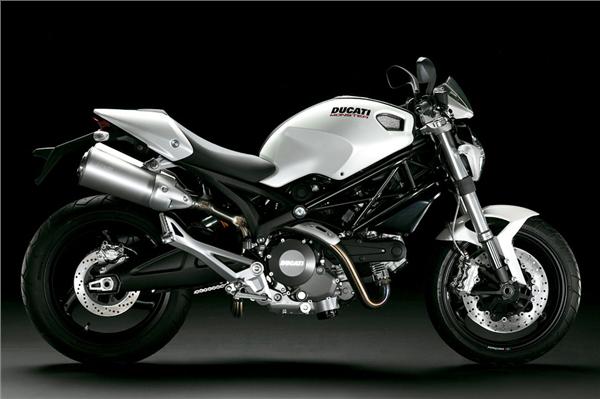K1300R (2009 - present) review
If you’ve only really been into bikes for the past three years, your perception of BMW is probably exactly as the marketing types in Munich would like it. They have a world stuntriding champion in Chris Pfeiffer, an enduro die-hard in David Knight, a worldwide bestseller in the GS Adventure and a range of bikes that would surely whet the whistle of any biker.

If you’ve only really been into bikes for the past three years, your perception of BMW is probably exactly as the marketing types in Munich would like it. They have a world stuntriding champion in Chris Pfeiffer, an enduro die-hard in David Knight, a worldwide bestseller in the GS Adventure and a range of bikes that would surely whet the whistle of any biker.
What more would you need to know? Those who have been around a little longer will probably be of the opinion that BMWs are more suited to MPG fanatics and those who are fat in the pocket but a little skinny in character. The 2009 range of K1300s should silence the critics though, and add meat to the bones of a vibrant, forward-thinking BMW skeleton.
For those who have been losing sleep wondering, I can now put your minds to rest by letting you know that, yes, these bikes now have standard Japanese-style indicators. Although don’t turn over now that you know, as there is so much more to these bikes than just a contemporary indicator switch.
The K1200R, that this bike supersedes, was a bit of a white elephant, never really selling in huge numbers as nobody really knew what it was intended for. BMW wanted everyone to know it was the most powerful production naked bike ever produced, and that it definitely was, with 163bhp and 90lb-ft of torque. But it had little else going for it, and at the time seemed to be going against the BMW grain of bikes. The 1293cc 1300R is up 136cc on last year’s model, bringing another 10bhp and 9.6lb-ft of torque with it.
First off, I feel compelled to mention the visuals, or lack thereof. How weird does this thing look? Part GS800, part Severn Bridge, part Patrick Moore. I won’t lie, it looks horrid. Luckily, this bike compensates with a bucket-load of techno function. Of all the changes to the new bike, the choice to change the lower arm on the Duolever suspension at the front from steel to forged alloy feels like one of the biggest improvements. It only equates to a saving of 1kg of unsprung weight, but it transforms the feel of the front end. Where the old one felt wayward, cumbersome and inconsistent when riding fast roads, the new version is the polar opposite. It gives a really stable platform to work off when trying to ride fast.
If you’ve only really been into bikes for the past three years, your perception of BMW is probably exactly as the marketing types in Munich would like it. They have a world stuntriding champion in Chris Pfeiffer, an enduro die-hard in David Knight, a worldwide bestseller in the GS Adventure and a range of bikes that would surely whet the whistle of any biker.
What more would you need to know? Those who have been around a little longer will probably be of the opinion that BMWs are more suited to MPG fanatics and those who are fat in the pocket but a little skinny in character. The 2009 range of K1300s should silence the critics though, and add meat to the bones of a vibrant, forward-thinking BMW skeleton.
For those who have been losing sleep wondering, I can now put your minds to rest by letting you know that, yes, these bikes now have standard Japanese-style indicators. Although don’t turn over now that you know, as there is so much more to these bikes than just a contemporary indicator switch.
The K1200R, that this bike supersedes, was a bit of a white elephant, never really selling in huge numbers as nobody really knew what it was intended for. BMW wanted everyone to know it was the most powerful production naked bike ever produced, and that it definitely was, with 163bhp and 90lb-ft of torque. But it had little else going for it, and at the time seemed to be going against the BMW grain of bikes. The 1293cc 1300R is up 136cc on last year’s model, bringing another 10bhp and 9.6lb-ft of torque with it.
First off, I feel compelled to mention the visuals, or lack thereof. How weird does this thing look? Part GS800, part Severn Bridge, part Patrick Moore. I won’t lie, it looks horrid. Luckily, this bike compensates with a bucket-load of techno function. Of all the changes to the new bike, the choice to change the lower arm on the Duolever suspension at the front from steel to forged alloy feels like one of the biggest improvements. It only equates to a saving of 1kg of unsprung weight, but it transforms the feel of the front end. Where the old one felt wayward, cumbersome and inconsistent when riding fast roads, the new version is the polar opposite. It gives a really stable platform to work off when trying to ride fast.
Price: £9,500
Front suspension: BMW Duolever
Rear suspension: BMW Paralever
Front brake: 320mm discs, four piston calipers
Rear brake: Single 265mm disc, two piston caliper
Dry weight: 217kg
Seat height: 820mm
Fuel capacity: 19 Litres
Colours: Silk metallic, Lava Orange and Light Grey Metallic
Engine: Liquid cooled, 16 valve, inline four, 1,293cc
Power: 173bhp @ 9,250rpm
Torque: 103 ft.lb @ 8,250rpm
Top speed: 165mph

